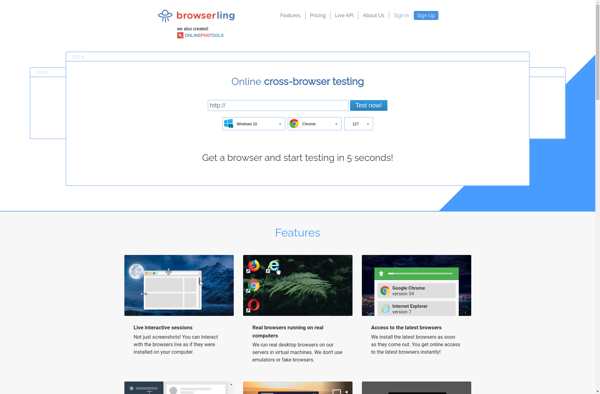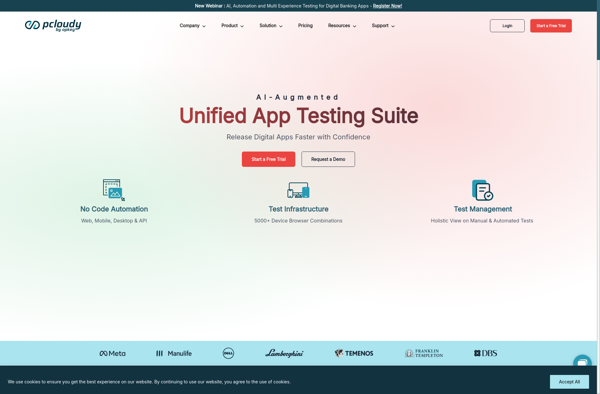Description: Browserling is a cross-browser testing tool that allows you to test your website in multiple browsers online. It emulates various browser and operating system configurations so you can see how your site looks and functions across different environments.
Type: Open Source Test Automation Framework
Founded: 2011
Primary Use: Mobile app testing automation
Supported Platforms: iOS, Android, Windows
Description: pCloudy is a cloud-based test automation platform that allows users to test mobile and web apps on thousands of real devices hosted in the cloud. It supports manual and automated testing and provides integration with CI/CD pipelines.
Type: Cloud-based Test Automation Platform
Founded: 2015
Primary Use: Web, mobile, and API testing
Supported Platforms: Web, iOS, Android, API

